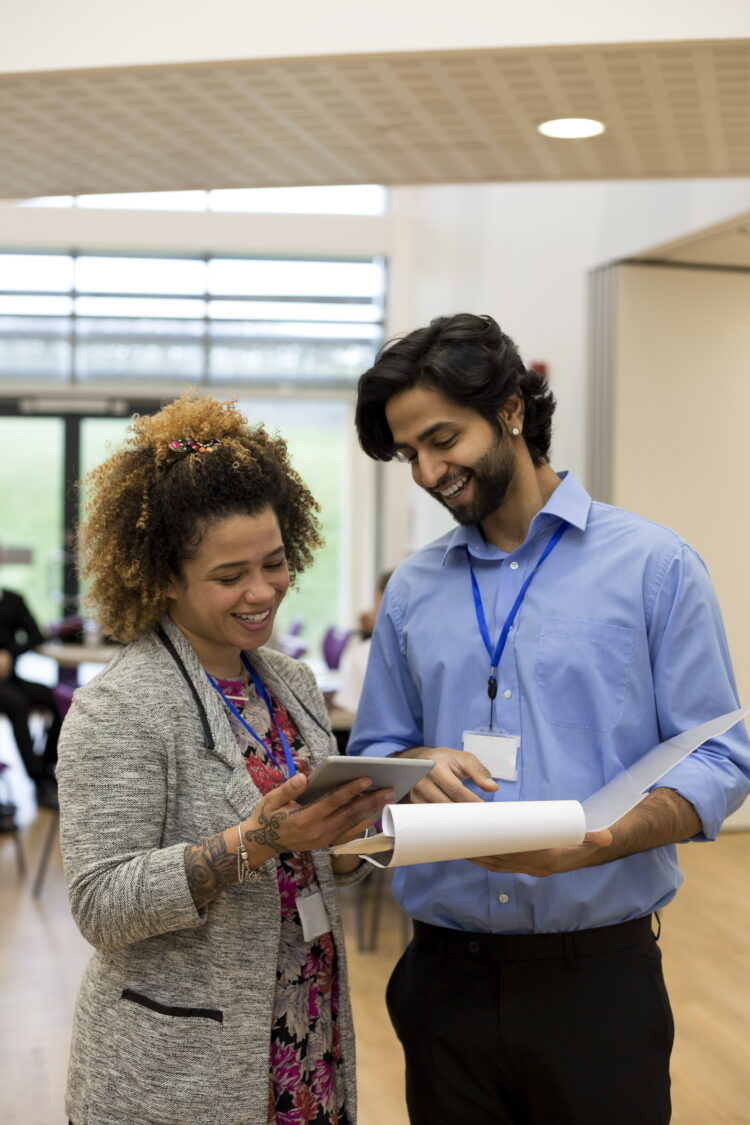You’ve heard great things about educational coaching. You may have experienced great things with educational coaching!
Coaching has many benefits, from greater cohesiveness among administrators and teachers, improved instruction, and gains in student achievement.
As you strengthen and refine your educational coaching program this school year you may be exploring different coaching models in education.
Let’s take a look at the top three most common instructional coaching models and how to determine which model to use to achieve specific goals.
Table of Contents
- What Is a Coaching Model in Education?
- 3 Coaching Models in Education
- Which Instructional Coaching Models Work the Best?
- How to Implement Cognitive Coaching With TORSH Talent
What Is a Coaching Model in Education?
A coaching model in education is a framework from which one can effectively move through the coaching process. The purpose of coaching models in education is to close the student achievement gap and accelerate learning by helping teachers implement evidence-based instructional practices with fidelity.
Instructional coaching models entail an ongoing rhythm of:
- Goal-setting
- Learning
- Observing
- Collecting data; and
- Reflecting
However, the starting point for coaching isn’t the same for every teacher. Some teachers may benefit from entering at the learning stage, while others may begin by collecting data or a time of reflection.
3 Coaching Models in Education
There are three common coaching models in education, including:
- Directive coaching
- Non-directive coaching
- Collaborative coaching
#1: Directive Coaching
Directive coaching is coach-led.
In the directive model of coaching, the coach observes the teacher and provides explicit direction and recommendations for improving practice.
A directive coach uses their experience and expertise to problem solve for the teacher.
Directive coaching is an effective approach when a teacher is unfamiliar with a practice, skill, or approach so is in need of clear descriptions and modeling.
The goal of directive coaching is to ensure a teacher gains a deep understanding of a pedagogy, curriculum routine, or specific practice so they have a strong foundation to implement it with fidelity.
Directive coaching can also be beneficial when a teacher has been struggling with a problem or issue for a while and is in need of guidance to get unstuck and reduce frustration. But directive coaching should not be a permanent state within a coaching relationship. It is useful to quickly build knowledge and address pressing issues but should be scaffolded to empower teachers to problem solve and make decisions on their own.
What Is the Coach’s Role in a Directive Model?
The coach’s goal in the directive coaching model in education is to help the teacher master a skill or set of skills. A directive coach must:
- Be a skilled listener
- Be good at effective questioning techniques
- Possess sensitivity
- Have the intuition needed to gauge the teacher’s understanding or lack thereof
- Be able to effectively model instructional techniques
- Be able to provide clear explanations
- Be an expert at providing constructive, non-judgemental feedback
The directive coach’s role is to ensure teachers learn the right way to do something.
Directive coaches:
- Identify what a teacher needs to learn or improve upon; Model best practices;
- Observe teachers in the classroom; and
- Provide constructive feedback to teachers until they can perform the new practice with fidelity
In this model of coaching, coaches do most of the problem solving, set goals, and provide specific direction.
Directive coaching can be particularly effective when working with a new teacher or veteran teachers learning new technologies or instructional practices. For example, maybe the teacher is having a particular struggle in the classroom. The coach asks the teacher’s input on ways to solve the problem, but the teacher is at a loss for a solution.
One way the instructional coach might use directive coaching would be to let the teacher know how other teachers attack similar issues by doing a, b, or c.
#2: Non-Directive Coaching
Non-directive coaching is teacher-led.
Coaches are there to provide guidance for teachers to problem-solve and make decisions on their own. The teacher generally knows what they need to work on and leads the way — with the coach providing expert advice and assistance as needed.
The strategy of non-directive coaching is most successful when the teacher being coached already possesses the knowledge they need to improve.
What Is the Coach’s Role in a Non-Directive Model?
Non-directive coaches invite teachers to share their ideas as they:
- Listen with empathy;
- Paraphrase thoughts back to the teacher; and
- Ask thought-provoking questions
In the non-directive coaching model in education, the coach must discern where the teacher is and whether they need to be thrown a life preserver. Do they need to engage collaboratively, or should the coach lead the way?
Non-directive coaches are not there to share their expertise or suggestions regarding what a teacher can do to improve, because they operate from the assumptions that:
- Teachers already possess the knowledge they need to improve, so their role is to help them refine and strengthen the skills they already have.
- Coaches who share ideas and expertise with teachers may impede progress by keeping the teacher from solving their own problems.
In a non-directive coaching relationship the educational coach is a sounding board, facilitator, and counselor.
What Is the Focus in a Non-Directive Model?
Non-directive coaching places a strong emphasis on helping teachers overcome self-limiting attitudes and assumptions — and empowering them to realize their strengths.
This form of instructional coaching is useful in a wide variety of situations and can address issues that collaborative and directive coaching are unable to address.
For example, non-directive coaching may be useful in helping a principal change the culture in their building or helping a teacher get along with a difficult co-worker.
#3: Collaborative Coaching
Collaborative coaching is a partnership between teacher and coach.
The collaborative instructional coaching model involves a coach asking a teacher probing questions to encourage thinking and self-reflection. The teacher and coach then work together to come up with an effective solution.
Collaborative coaching is used with teachers who have the knowledge and experience to consider a lesson and understand aspects that were or were not effective.
Collaborative instructional coaching operates on the assumption that the teacher can solve their problem and grow their practice with supportive guidance stemming from research-based strategies.
What Is the Coach’s Role in a Collaborative Model?
A collaborative instructional coach …
- Asks probing questions
- Practices active listening
- Helps the teacher identify their goals
- Collaborates to formulate effective strategies
- Assists, as needed, in implementing the needed adaptations
… to make a positive impact on student achievement and wellbeing.
In contrast to non-directive coaches, collaborative coaches readily share their expertise.
Collaborative coaches must have a deep understanding of a wide variety of teaching strategies they can share with the teacher to help them reach their goals.
The coach, however, does not think for the teacher. Instead, they position the teacher as the decision maker.
They don’t share advice but give possible strategies, which the teacher then evaluates to decide which strategies they will use.
For instance, the teacher may watch a video of their lesson and know clearly what was not effective. They may consider focusing on correcting that issue over two weeks. The coach, however, may watch the same video and see something different. The collaborative coach might tell the teacher, “You’re right, but I don’t know that you need a couple of weeks to correct that issue. I think you could fix it in 5 minutes tomorrow. What about focusing on one of these two spots in the lesson, instead?”
A collaborative instructional coach also understands that student-focused goals, that matter to the teacher, are essential for effective coaching.
In collaborative coaching, the goal itself is the standard and the teacher always has the final say. A teacher may choose to implement a strategy in a way that’s radically different from how it was designed.
When this happens, a collaborative coach doesn’t take a top-down approach and begin telling the teacher how to teach.
Instead, they might say, “Let’s see if this strategy will enable us to hit the goal.” If the goal isn’t reached, the pair can go back, together, to consider how the strategy should be taught to attain a greater level of fidelity.
Collaborative coaching can be greatly facilitated by tools that enable coaches and teachers to communicate on a frequent, regular basis and for coaches to provide meaningful feedback and support so that teachers can successfully learn new skills and improve the skills they already have.
TORSH Talent is an all-in-one platform for:
- Video-based classroom observation
- Virtual synchronous and asynchronous coaching
- Goal setting and tracking
- Peer-to-peer coaching
Which Instructional Coaching Models Work the Best?
Student-centered models work best because they draw on the knowledge and strengths the teachers already possess.
Cognitive coaching, which is very similar to collaborative instructional coaching, is student-centered and encourages collaboration and dialogue between coach and teacher.
The Cognitive Coaching Process
Cognitive coaching is based on the idea that being aware of how you think and process information fosters independence in learning.
Cognitive coaching empowers teachers to explore the thinking behind their practices.
By giving personal insights into the teacher’s own thinking processes, a cognitive coach helps them to become a flexible, confident problem-solver.
Expected Outcome of Cognitive Coaching
Cognitive coaching has the potential for an array of positive outcomes, including:
- Increasing teacher autonomy by growing their ability to self-analyze, self-monitor, and self-evaluate.
- Enhancing intellectual growth by helping teachers explore the thought processes behind their teaching practices.
- Fostering professional inquiry and supporting continued professional growth.
- Supporting informed teacher decision-making by helping teachers understand the “why” behind their decisions.
- Helping foster positive peer relationships within schools because teachers are modeling open-mindedness, risk-taking, and continued learning.
How to Implement Cognitive Coaching With TORSH Talent
The TORSH Talent platform was designed with educators’ needs in mind.
TORSH Talent’s K–12 platform helps districts provide high-quality professional learning and coaching for principals, teachers, and other staff using:
- Coach matching and scheduling
- Video coaching
- Video-based classroom observation
- Professional learning communities
- Self-paced courses
- Personalized learning pathways
- Goal setting and tracking
Our comprehensive, FERPA compliant, video-based platform effectively captures and catalogs every interaction in the coaching process and makes it easy for instructional coaches to leave time-stamped, meaningful feedback and guidance and for teachers to review the notes and ask questions throughout the process.
And there’s no need for Google Meet or Zoom since live coaching sessions can be conducted using the in-platform, synchronous video function.
TORSH Talent empowers instructional coaches with the tools they need for effective, growth-oriented coaching — all in one easy-to-use and affordable platform. Request a demo today!



